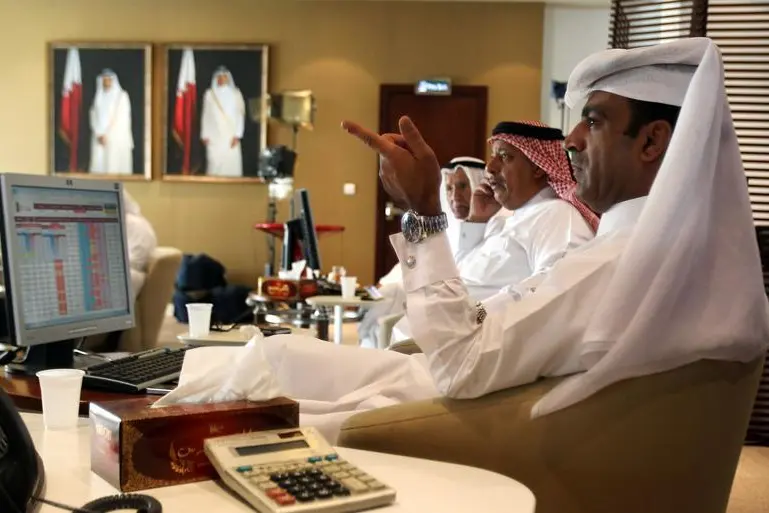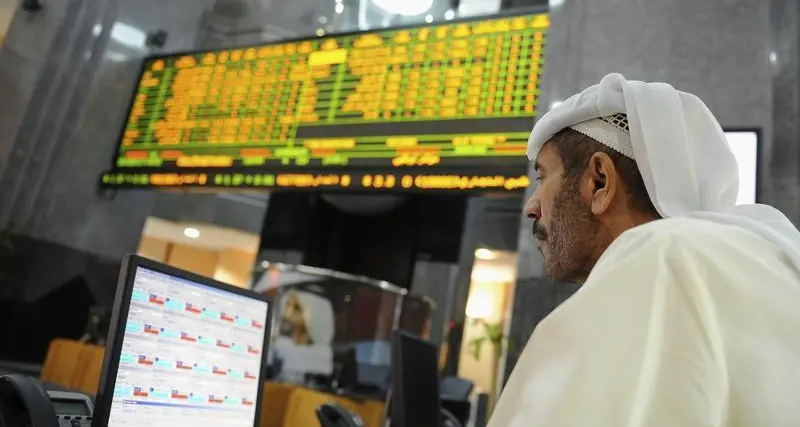PHOTO
Gulf stock markets fell in the month of May, as the extension of the Opec-led production cuts and the multi-billions dollar deals signed during President Donald Trump’s landmark visit to Saudi Arabia failed to ignite excitement among traders.
Dubai, Abu Dhabi and the Saudi index dropped by more than 2 percent, while the market in Qatar was down by 1.62 percent.
Credit rating downgrades
Credit rating agency Standard & Poor's cut Oman’s credit rating to junk in mid-May, making the sultanate the second country in the Gulf to drop below investment-grade as a result of the low oil prices.
However, the market in Oman was given a boost at the end of the month as MSCI moved Pakistan to the Emerging Market Status, which increased the weight of Oman in the Frontier Market. In June, investors will be watching closely to see how this plays out.
“Essentially markets have been falling quite a bit. With Pakistan being upgraded to Emerging Market, every other constituent on the Frontier Market has seen its weight increased. The weight of Oman is 4.37 percent now with seven stocks,” Kunal Damle of Securities & Investment Company (SICO) Bahrain said.
“Some names will see interest, especially the banks and the telecom sector. But, that said, given Oman's macro situation, most portfolio managers are still underweight on the market,” he added.
Qatar's credit rating was also downgraded one notch by Moody's Investors Service towards the end of May. The rating agency cited uncertainty over the sustainability of the oil-rich emirate’s growth model over the next years, along with its rising external debt.
“In the GCC, I don’t think there will be any further downgrades. Oman and Bahrain are the two smaller GCC countries with economies not as resilient as their Gulf peers. Qatar’s downgrade was just a reflection of their difficulty in coping with external investors to cover growing debt,” according to a MENA equities specialist, who asked not to be disclosed.
“Oman tapped the international bond market a lot lately and they will continue with sovereign debt issuance to finance their deficits given the squeeze on their economy,” he added.
Slowing Saudi market
Saudi investors were anticipating the landmark visit by U.S. President Donald Trump, which resulted in nearly $200 billion worth of deals between the two allies. While the key event buoyed sentiment in the Saudi market, none of the deals involved listed Saudi companies and, therefore, no major market impact was felt by traders.
“I did not see any fireworks or big market movements following the widely anticipated visit of Trump to Saudi Arabia. It was more of a wait and see approach among investors around that time,” the MENA equities specialist said.
Lower investors’ appetite on Qatari market
The Qatari market hit a 5-month low around the beginning of May on the back of net selling pressure on its domestic institutions.
“Even before the latest credit downgrade of Qatar, we saw a significant slowdown in the equities market in Qatar. Investors’ appetite in the market was very low with some stocks going down to 52 weeks low,” the equities specialist said.
One of the factors affecting the slowdown in the Qatari market later in the month was the initial approval of shareholders of Ezdan Public Holding, the largest property developer in Qatar, to turn it to a private joint stock company.
Ezdan Holding Group has a majority ownership by the ruling family and has the second largest weighting in the benchmark index in Qatar.
“Ezdan’s plan to go private definitely sends negative signals for the investment sentiment in Qatar and could lead to some investors reducing their exposure to Qatar, because there was lack of clarity and a sudden decision to de-list,” the equities specialist added.
The company’s plan created a lot of uncertainty because no one knows how they will de-list the company, what the time frame is for the complete de-listing, and what the plans are for the minority shareholders in the company.
Oil cut deal extension
Oil prices have been trading at highs during the month of May, with investors hoping that an OPEC-led production cut would be extended.
OPEC and non-members led by Russia met on Thursday, 25 May in Vienna and decided to extend cuts in oil output by nine months to March 2018. Market expectations were higher as investors had hoped in the week of the meeting that oil producers would reach a last minute deal to deepen the cuts or extend them further, until mid-2018.
“OPEC ended the meeting without any surprises. Most countries are still producing in the upper-end of the range of the last few years,” Giorgos Beleris, oil research manager, MENA at Thomson Reuters said on the matter.
“Market participants appear to have been expecting steeper cuts from the group, albeit that may be borderline realistic as it would not necessarily boost revenues in the near-term,” he added.
At the end of the trading session on Thursday, oil prices dropped more than 4 percent on the disappointment in the decision, especially that there were hints before the meeting that the cuts might be extended by as long as 12 months.
On oil prices Beleris said: “Given that US production is recovering at a rapid pace, significant price support may prove to be unproductive for OPEC and other big producers. The balancing act is very delicate.
“Prices should receive further support in the coming weeks/months, on the back of higher demand, especially in the US,” he added.
“Significant upward movements are rather unlikely in H2 2017, however we expect crude benchmarks to average at the mid-$50s.”
© Zawya 2017












